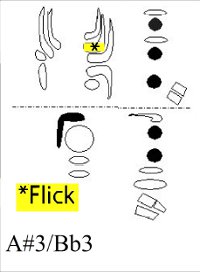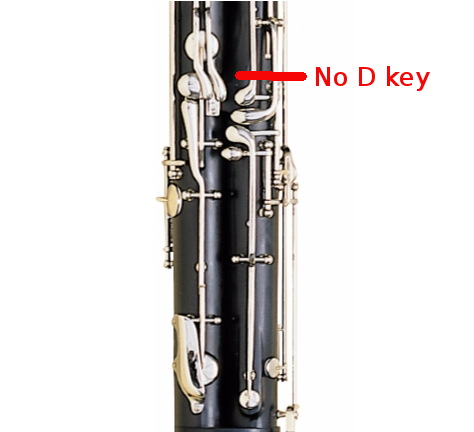
Sixth Bassoon Lesson, Part 1
Use of flick or speaker keys. By Terry B. Ewell. BDP#193.
www.2reed.net/bdp.
<Intro
Music: “Home Sweet Home” from A Tune a Day,
lesson 29 number 6.>
Hello, I am Terry Ewell. I
welcome you to this continuation of the series on beginning bassoon lessons.
I started the series in 2008 (See BDP
25-27; 30-37). This series is based upon an article that I wrote in the year
2000.
http://www.2reed.net/EwellArticles/BeginningBassoonist_DR23_2.pdf
I am sorry it has taken me so
long to get back to the series. You have probably noticed that I have been busy
making a number of other videos.
So, let’s get started!
The art of “flicking” is one of
the most difficult things for young bassoonists to do. Given the difficulty, I
think that it is important the students understand the reason for doing this. I
always take the approach that Norman Herzberg did when he introduced flicking to
me. I am going to give this to you now.
The purpose of the flick keys, or
speaker keys, can be demonstrated on the pitch A3 above open F.
<Demonstration of tonguing A3
without the flick key down or a half hole>
You will notice that the start of
each note is not very good. Sometimes there is a little extra “kk” or extra
noise that is part of that. However, if I hold down the A speaker, the A flick
key, that will be cleaned up.
<Demonstration of tonguing A3
with the flick key down >

Every note is quite solid now and
plays well.
There are several other notes
that can be improved with flicking. Although I introduce the notes in later
lessons, let’s go ahead and group them altogether now. So we introduce Bb3, B3,
C4, and occasionally I flick D4.




Please note that some of the
student instruments do not have a D key.

I mention here that I use a
numbering system or octave designations for the
pitches that is developed by the Acoustical Society of America. This system is
now standard throughout America and in many American universities.
https://www.youtube.com/watch?v=7Yp-k7vMzwI
Although some bassoonists (mainly
in Europe) hold down the speaker or flick keys for the full duration of the
note, I like many other Americans release the keys once the note starts. Thus we
give the word “flicking” for it because we depress and release the key. The key
must be down, however, at the start of the note.
There are two situations that
require the flick keys. The first is when you articulation one of the notes that
needs to be flicked.
Rubank lesson 6, number 3
provides an example of this.
<Example: Rubank lesson 6, #3>

The second instance when we need
to use the flick key is when we slur to one of those special notes with the
interval of a third or more.
The exercise in Lesson 6 number 6
from A Tune A Day helps students to
master the flicking technique during octave skips. So let’s break this apart in
two ways. First let’s practice the release of the whisper key on the beat, the
flick of the octave on the beat, and the release on the beat. Let me demonstrate
first how this is done on the A octave.
<Example: A2-A3>

This is an easy way to first
learn how to do that. So let me play number 6 for you now.
<Example:
A Tune A Day, Lesson 15, number 6,
with rhythmic flicking>

Now you may have noticed that I
used the D key for to flick for C4. Normally you use the C key, but I do find in
certain occasions that using the D key raises the pitch of C4 slightly. That is
a flat note on my instrument. So I find that helps to bring up the pitch.
Now let’s do the exercise again
but this time I will flick more rapidly.
<Example:
A Tune A Day, Lesson 15, number 6,
with rhythmic flicking>
The down slur portion is in many
ways just as difficult if not more difficult than the upward slurs of an octave.
The way to effectively slur downward is to keep the embouchure—the lower jaw
forward—so that the teeth are parallel. As you slur down you will need to move
the jaw slightly downward and perhaps even forward. Getting the “hang of that”
is not easy. Also I find that in the last slur from G3 to G2 it is helpful to
open the first finger here and put it down. Open it all the way for G3 and put
it down for G2.
Well, using the flick keys is
really going to help the clarity of your notes. Careful work on this will
greatly help your bassoon playing.
<Closing
Music: “Home Sweet Home” from A Tune a Day,
lesson 29 number 6.>
Copyright (c) 2016 By Terry B. Ewell. All rights reserved.